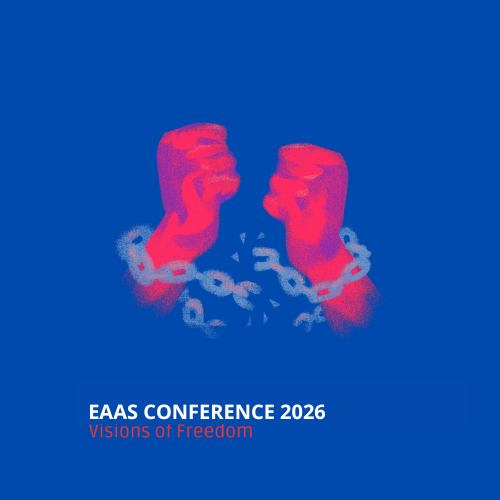Call for panels and papers
1776-2026: Visions of Freedom
Important dates
Leggi dettagli
In the introduction to his book The Story of American Freedom (1999), Eric Foner wrote: “Americans’ love of liberty has been represented by poles, caps, and statues, and acted out by burning stamps and draft cards, running away from slavery, and demonstrating for the right to vote. If asked to explain or justify their actions, public or private, Americans are likely to respond, ‘It’s a free country.’” Published at the dawn of the new millennium, this statement poses a lasting challenge, at once historical, cultural, literary and political: what does the idea of freedom here imply? What do a series of images mean, considering that they can be appropriated by different if not opposing perspectives? How many visions of freedom have been pursued, accomplished, abused or exploited in the past 250 years? EAAS 2026 intends to address these questions, investigating the ever-changing reality of the United States.
The Declaration of Independence (1776) famously recognized three main unalienable rights - Life, Liberty and the Pursuit of Happiness. Indeed, after pointing out the “tyranny” of the British Crown, the Declaration described the subjects of the colonies as “free people,” deeming the ruler “unfit,” while urging the Colonies to become “free and independent States.” The newly acquired freedom granted the new federated States the power to levy war, sign peace treaties, contract alliances, establish commerce, paving the way to future colonial/imperialist projects. Since the Revolution, pundits and politicians have celebrated the exceptional character of American freedom (and empire), which they interpreted as a pioneering achievement, capable of inspiring other nations, contributing through their example to the larger cause of “liberty” and “democracy” around the world. From this moment onward, American cultural productions, literature, visual art and film have constituted a precious output to observe, map and question this national mythmaking, each time celebrating or problematizing the nation’s ability to hold on to its promises and premises: from the transcendentalists to the masters of American Renaissance, from the novels and pamphlets of the Gilded Age, to the voices emerging from many margins (African Americans, women, Indigenous people, Asian Americans, among others). American artists of all genres and disciplines have contributed to redefine the very idea of American freedom.
Despite the importance granted to both freedom and liberty, since that beginning, the US articulation of freedom has been exclusive, as gender, race, religion, and class have determined who could benefit from such unalienable rights and in what manner. Notably, in different ways, women, Black and Indigenous people would not be granted the rights promised by the Constitution, and neither the 13th (abolition of slavery), nor the 14th (right to citizenship) amendments passed soon after the Civil War brought about a truly equal and just society. The promises of citizenship granted by the Constitution were quickly jeopardized. Racial divide was complicated by industrialization, urbanization, and Jim Crow, while class conflicts sometimes led to outbreaks of violence.
Despite such evident contradictions between the universal ideals professed and the law, the centrality of freedom as a defining characteristic of US national identity has been confirmed and renewed by its constant retooling for diverse propaganda purposes. “The land of the free, the home of the brave” is an identity statement proudly sang by a variety of audiences; yet increasingly during the 20th century, it was one that was consistently reappropriated by marginalized groups, as well as by counter-cultural narratives, social movements and discourse, to question the nation’s founding ideals in light of evolving and complex international scenarios. The visions of (American) freedom were problematized after 9/11, affecting not only politics inside and outside the nation, but also the rhetoric of the nation’s ideals, in turn questioning the solidity, as well as the actual meaning of American democracy. “How do we imagine and struggle for a democracy that does not spawn forms of terror, that does not spawn war, that does not need enemies for its sustenance? [...] How do we imagine a democracy that does not thrive on this racism, that does not thrive on homophobia, that is not based on the rights of capitalist corporations to plunder the world’s economic and social and physical environments?” asked Angela Davis in The Meaning of Freedom and Other Difficult Dialogues (2012). These questions are even more urgent today in the frame of a growing democratic backsliding, and considering the threat posed by the illiberal regimes around the world.
List of possible topics
Leggi dettagliConference Format
Leggi dettagliSubmission instructions
Leggi dettagli